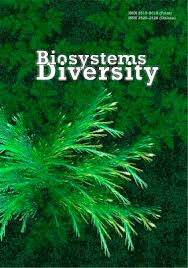Prevalence of gastrointestinal helminths in ruminants in Ukraine: a 5-year meta-analysis
Prevalence of gastrointestinal helminths in ruminants in Ukraine: a 5-year meta-analysis
Author(s): O. V. Kruchynenko, S. M. Mykhailiutenko, M. A. Petrenko, L. M. KuzmenkoSubject(s): Agriculture, Environmental Geography, Present Times (2010 - today)
Published by: Дніпропетровський національний університет імені Олеся Гончара
Keywords: cattle; sheep; goats; Trematoda; Cestoda; Nematoda;
Summary/Abstract: The production of environmentally friendly livestock products is currently receiving much attention, especially in the European Union. The problem of monitoring the quality and safety of meat and milk in modern conditions is relevant not only for Ukraine but also for the world community. The scientific substantiation of the methods of research on meat for sale subject to invasive diseases is especially important, as the product may pose risks to the consumer. One of the criteria for assessing the welfare of a herd is the prevalence of helminthiases in cattle. Ruminant parasitoses in Ukraine have always been and remain a separate, often significant, problem for veterinary specialists. Helminths have evolved to use a wide range of ecological niches. In this study, we tried to quantify the prevalence of helminthiases among ruminants (cattle, sheep and goats) in Ukraine. The relevant studies were searched for in the online databases. The meta-analysis included 15 publications from January 2015 to December 2020 which reported the spread of parasites in Ukraine. The research results show that the infestation of ruminants with gastrointestinal helminths on the territory of Ukraine is 56.7%. Egger’s regression test revealed no significant publication bias. During the period of pastured farming, stable parasitocenoses are formed in the body of ruminants. The parasitoses are caused by helminths (gastrointestinal strongyles, liver flukes, paramphistomas, dicrocelia). They are recorded in monoinvasions or mixed invasions. Ruminants, according to helminthological examination in different climatic zones, are constantly infested with trematodes. In Ukraine, the presence of three species of flukes has been confirmed in ruminants: Fasciola hepatica, Dicrocoelium dendriticum and Paramphistomum cervi. Parasitization by those species negatively affects the profitability of dairy farming. Trematodes cause significant economic losses: reduced milk productivity of cows, reduced live weight gain of young animals, negative impact on reproduction. At the same time, fascioliasis is socially significant and dangerous to humans. According to the analyzed literature sources, two types of cestodes have been registered in Ukraine: Moniezia benedeni and M. expansa. The epizootic situation regarding nematodes is just as fraught. That is the most numerous group of helminths, their fauna is represented by the following species: Strongyloides papillosus, Nematodirus spathiger, Bunostomum spp., Oesophagostomum radiatum, Haemonchus contortus, Toxocara vitulorum, Trichuris skrjabini, T. ovis and T. globulosa. It is proven that in cattle parasitocenoses are recorded more often than monoinvasions. The highest rates of prevalence of infection were observed when polyinvasion included gastrointestinal strongyles, namely from the order Strongylida. Strongyloides papillosus is the most common taxonomic representative, while Fasciola hepatica has the lowest prevalence of infection, especially in sheep. Updated data on helminthiasis will expand the screening strategy to maintain the health of farm ruminants and reduce economic losses.
Journal: Biosystems Diversity
- Issue Year: 29/2021
- Issue No: 3
- Page Range: 251-257
- Page Count: 7
- Language: English

